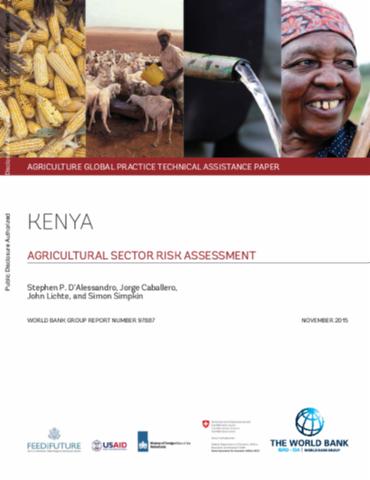Resource information
Despite myriad challenges, Kenya has emerged in recent years as one of Africa’s frontier economies, with headline growth in the most recent decade propelling the country toward middle-income status. Less well understood is how risk dynamics associated with production, markets, and policy adversely impact sector performance, in terms of both influencing ex ante decision making among farmers, traders, and other sector stakeholders and causing ex post losses to crops, livestock, and incomes - destabilizing livelihoods and jeopardizing the country’s food security. The present study was commissioned in part to bridge this knowledge gap. It is the first step in a multiphase process designed to integrate a stronger risk focus into sector planning and development programs. It seeks to learn from and build on a range of broad initiatives by the Government of Kenya (GoK) and its development partners purposed to enhance Kenya’s resilience and response to natural disasters. The ultimate objective is implementation of a holistic and systematic risk management system that will reduce the vulnerability and strengthen the resiliency of Kenya’s agricultural supply chains, and the livelihoods that depend on them. This sector risk assessment is the primary output of phase one. The study’s main objective is to identify, assess, and prioritize principal risks facing Kenya’s agriculture sector by analyzing their impacts via quantitative and qualitative measures. The study’s main findings highlight an agriculture sector increasingly vulnerable to extreme weather variability. Chapter one gives introduction. Chapter two provides an overview of Kenya’s agriculture sector and a discussion of key growth constraints. Chapter three assesses the main agricultural risks (production, market, and enabling environment). Chapter four analyzes the frequency and severity of the major risks identified and assesses their impact. Chapter five presents some stakeholder perceptions of these risks and the potential to improve their management. Chapter six concludes with an assessment of priorities for risk management and a broad discussion of possible risk management measures that can help to strengthen the resiliency of agricultural supply chains and the livelihoods they support.


